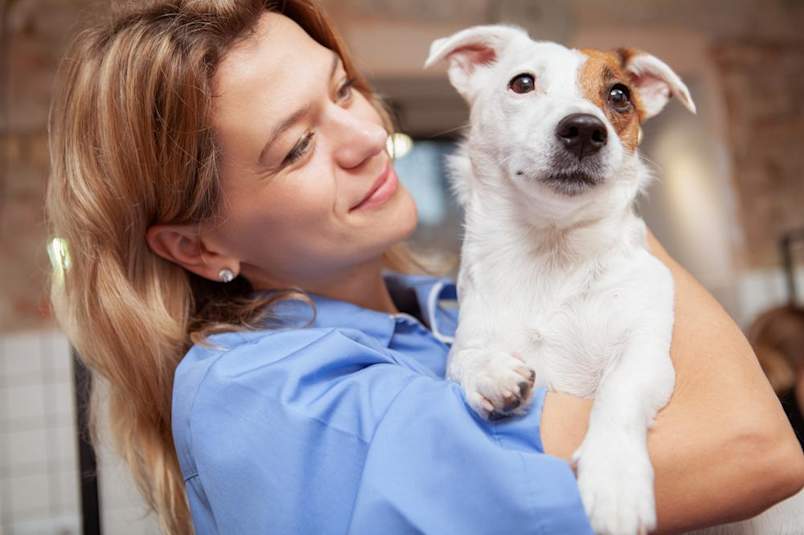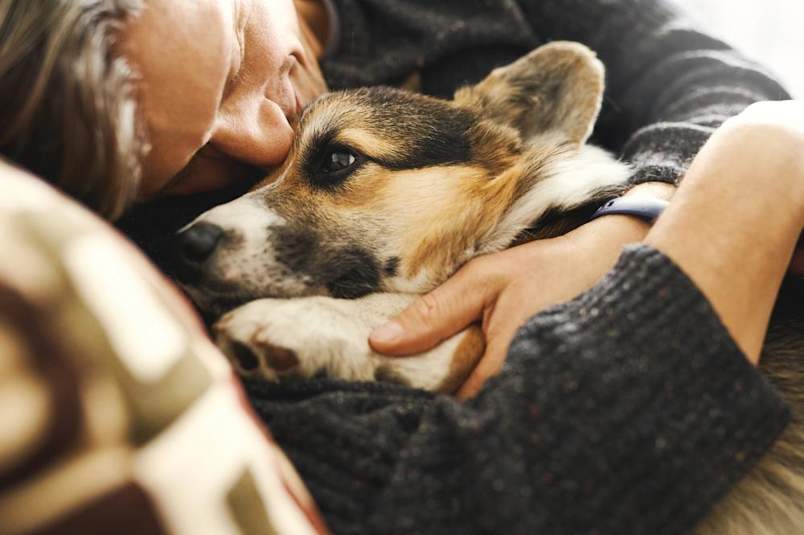
As a dedicated dog owner, you make sure your dog is wearing a collar and identification tag with your contact information, just in case they get lost. For most dog owners, the mere thought of losing your dog is horrifying. According to one study by the ASPCA and Ohio State University, 14% of dogs become lost at least once during a 5-year period.
Unfortunately, dog collars can break, and identification tags can get lost or become scuffed and illegible. Microchips, on the other hand, are small implantable transponders that get placed under your dog’s skin and then transmit an identification number when scanned. Microchips are one of the best ways to ensure that your dog will be reunited with you in the event they get lost, but how much does it cost to microchip a dog?
Cost of Microchipping a Dog
On average, microchipping a dog costs $25 - $60. This cost includes the microchip itself, implantation procedure, and online registration of the microchip to add the dog’s identification into a database and connect it to your personal contact information. When factoring this into the overall cost of pet ownership, such as how much German Shepherds cost, it's a relatively small but a worthy expense for your pet's safety.
When you get your dog microchipped, it’s important to confirm with the staff performing the implantation procedure what exactly is included in the cost to microchip a dog. Some places will require you, the owner, to register your dog’s information in the database yourself, and you’ll want to be sure that you know exactly how to do that when you get home. Connecting your personal contact information to your dog’s and keeping that up to date in the online database is the single most important thing you can do! This is what ensures the person scanning your lost pet can easily contact you to reunite with your pet.
In addition to microchipping a dog, many veterinarians recommend microchipping cats as well! Cats are just as likely as dogs to become lost because they can easily sneak through small door openings. If you want to get your cat microchipped, the cat microchip cost would still be the same as the cost to microchip a dog, because the same product and implantation procedures are used for both dogs and cats.
What Factors Affect the Cost of Microchipping?
There are multiple factors that can affect how much a microchip for your dog may cost. There are several brands of microchips on the market, so the cost will mostly be dependent upon the type of microchip your vet uses and the pricing they have set, which is usually dependent upon things like cost of living and business expenses. Some places, like low-cost clinics or animal shelters, may offer more affordable microchips.
If you rescue a dog that is already microchipped, you’ll only need to pay to register your personal contact information with the dog’s microchip number in the online recovery database. This should only be about $15 - $30. When you bring your new dog to your vet, the vet staff can explain exactly how to do this. Connecting your personal information to your dog’s information in the online recovery database is the most important step in ensuring your dog can be reunited with you.

Microchip Procedure and Maintenance
While microchipping might sound like it could be a scary process, it’s very quick and virtually painless for your dog! Microchips are small, about the size of a grain of rice, and they’re inserted between your dog’s shoulder blades underneath the skin using a syringe. The microchipping process is actually very similar to getting a shot--your dog might feel a quick pinch, but once the microchip is inserted, they’ll be able to walk out of the office and continue on with their day like normal!
If you’re worried about your dog experiencing any pain, you can choose for your dog to have the microchip implanted at any upcoming anesthetic procedure, like a spay, neuter, or dental.
Since microchips are such an important safety measure, be sure to discuss it with your veterinarian and get one for your pet as soon as possible. In fact, when you get a new dog and bring him to your vet for the first exam, it’s likely one of the basic things your vet will discuss with you, along with all the necessary shots for dogs and other standard new pet care, like spaying/neutering and dog pet insurance. In fact, many pet insurance policies offer additional optional wellness plans, and these wellness plans can help offset the cost of a microchip.
Keeping the Database Updated
Once your dog is microchipped and your personal contact information is connected to the microchip number in the online database, it’s incredibly important to keep your contact information updated in that database. If you move or change your phone number, you should update that information in the database right away. A microchip can only be successful in reuniting you when the information in the database is accurate!
In fact, it’s good practice to get into the routine of logging into the database at least a couple times per year to ensure that everything is accurate.
Are Microchips Required?
While there are no federal regulations mandating microchips in the United States, regulations may vary based on state, city, or county laws. For example, Hawaii is one state that does require pets to be microchipped. By instituting this regulation, Hawaii hopes to reunite more pets with their owners and to limit the number of animals that end up in the shelters.
Even though there are no federal regulations requiring microchips, microchipping your pet is one of the best ways to ensure that, should they get lost, your pup will be back in your arms as soon as possible.
Insurance Coverage for Microchipping
The good news is that not only is microchipping a great way to ensure that you can be reunited with your pet if they are lost, but many insurance companies offer separate pet wellness plans that can help you budget the cost of your pet’s routine care, like microchipping. While these preventative care items aren’t generally covered by insurance, these wellness plans can reimburse you for the costs of microchipping your dog.
Wellness plans are separate plans that complement your standard dog pet insurance plan for illnesses and accidents. Wellness plans are intended to serve as budgeting tools by helping you plan and manage your dog’s routine care and reward you for being proactive with that care.
Other Options for Safety
While microchipping has proven to ensure the success rate of reuniting owners with their lost pets, there are other options that can also help.
The primary drawback to a microchip involves a good samaritan finding a lost animal and then transporting them to a veterinary hospital or animal shelter to use a microchip scanner to scan the animal. On the other hand, if your dog is wearing something like a QR dog tag, the good samaritan could simply scan the code with their cell phone camera and immediately call you to reunite you with your pet.
In addition to being more convenient for good Samaritans, QR dog tags can also be more informative for owners. The web page associated with a QR dog tag can contain more information about the pet, such as their name, breed, medical conditions, and any other relevant information. This information can be helpful to both the good Samaritan and the owner in the event that the pet is lost.
Overall, QR dog tags are a convenient and informative option for pet owners who want to increase the chances of being reunited with their lost pets. Want to make sure you cover all your bases? Go with a simple QR tag that anyone can use and a microchip, in case the tag is lost or removed.

Conclusion: The Cost of Microchipping your Dog is Well Worth it.
Simply put, microchipping is a cost-effective safety measure with positive supporting data that proves that it increases the return-to-owner rate for pets. Plus, most wellness plans offered by pet insurance companies can help offset the cost to microchip a dog.
Even if you microchip your dog, it's still good practice to ensure your dog is wearing a collar with up-to-date ID tags as well. Both of these safety measures together will increase the chance of reuniting you with your dog if he were to become lost.
Imagine the heartbreak of losing your furry best friend. Imagine the despair of searching for them day after day, with no end in sight. Imagine the joy of finally being reunited, thanks to a microchip. It is a feeling that no pet owner can truly describe.
Microchipping is not just about getting your dog back if they are lost. It is also about peace of mind. It is knowing that your beloved companion is always identifiable, no matter what. It is the ultimate expression of your love and devotion.